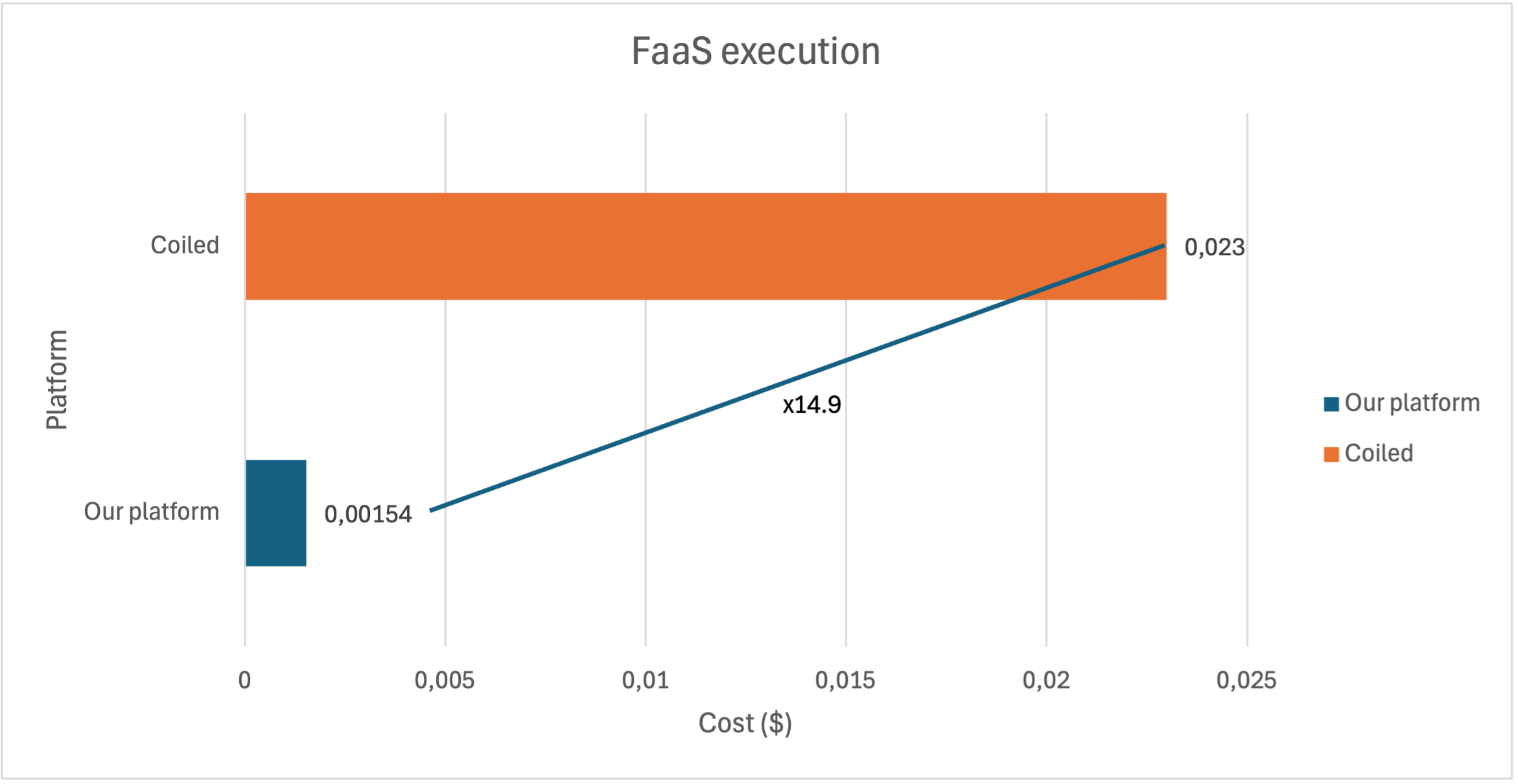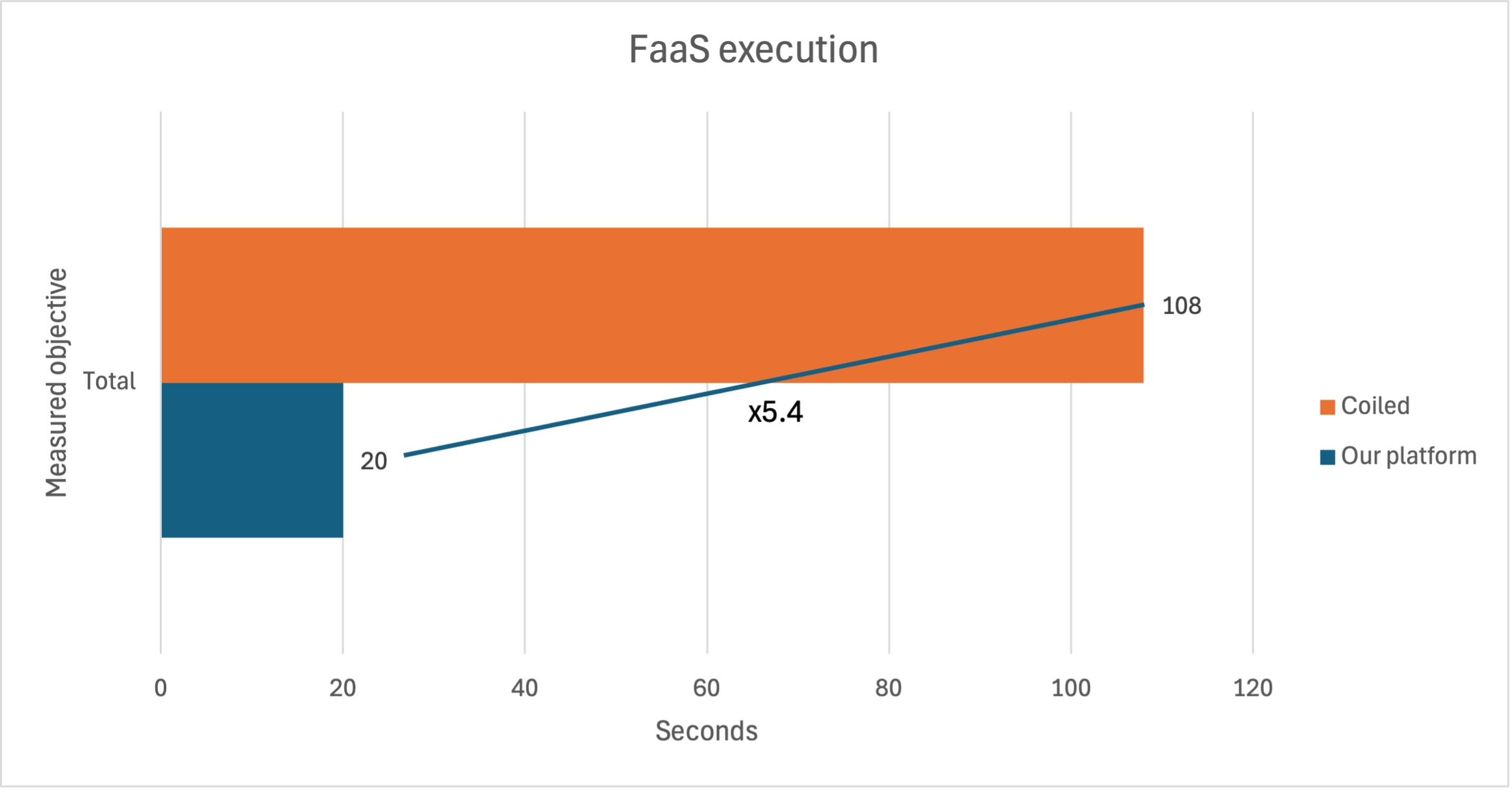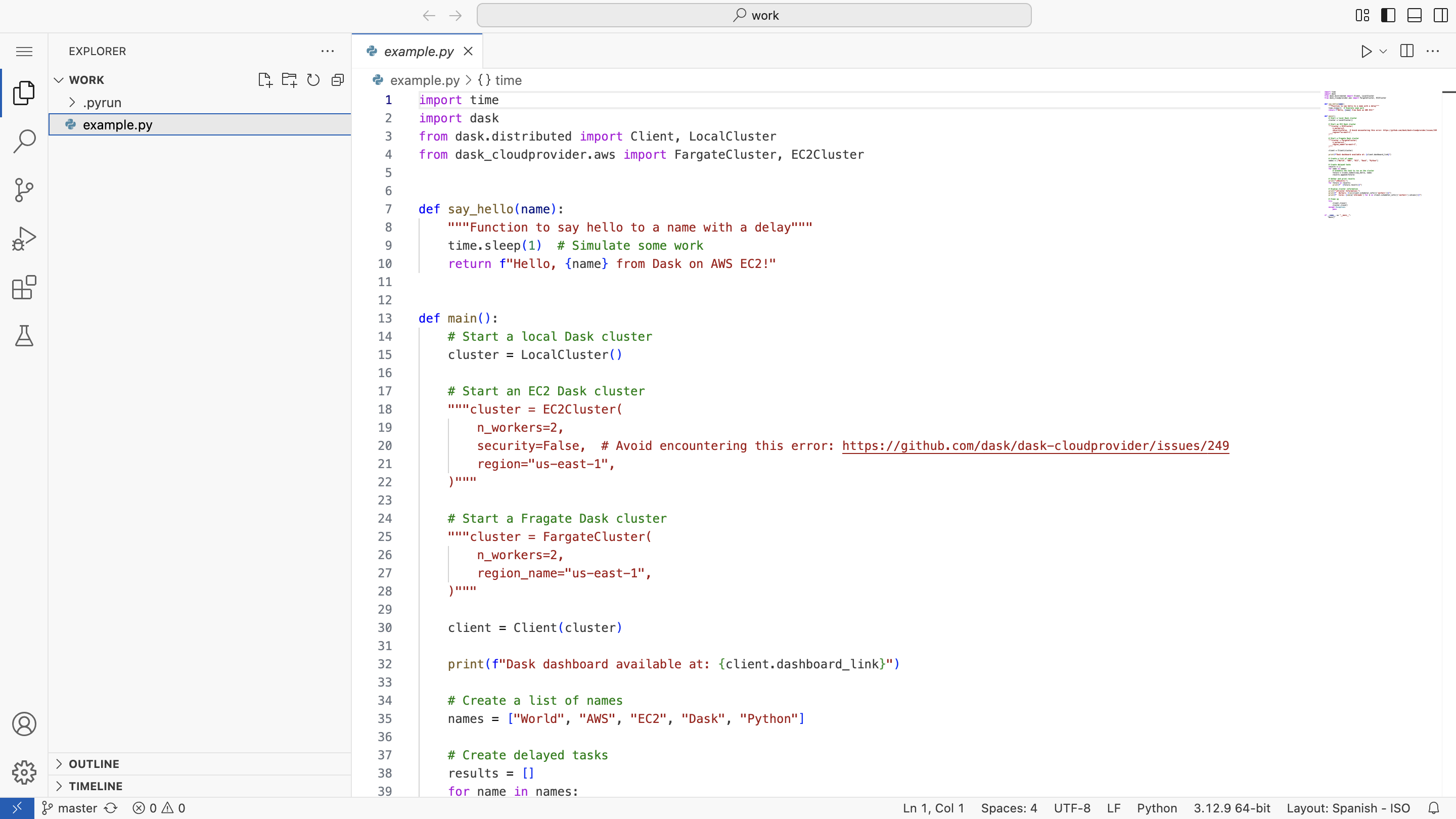PyRun vs. Coiled: Choosing the Right Cloud Computing Platform ⚔️
Both PyRun and Coiled aim to simplify scaling Python workloads in the cloud, particularly with Dask. Coiled is a valuable tool for scaling Dask, offering managed cluster deployments. However, PyRun provides a distinct, integrated, and often more efficient approach, especially when considering versatility, ease of use, and overall performance across different types of workloads and frameworks.
This page outlines the key differences to help you choose the platform that best fits your needs.
Core Philosophy and Approach
- PyRun: Focuses on providing a unified, simplified, and highly integrated platform for running various Python workloads (including Dask, Lithops - FaaS, Ray, and Cubed) in the cloud. It prioritizes automating infrastructure management, runtime configuration, and providing a seamless user experience directly within the platform across multiple clouds (AWS & IBM Cloud).
- Coiled: Primarily focuses on managed Dask cluster deployment and scaling on AWS. It aims to make provisioning and managing Dask clusters easier for data scientists and engineers already familiar with Dask.
Performance & Cost Benchmarks
Direct comparisons highlight significant performance and cost advantages for PyRun in specific scenarios:
FaaS (Function-as-a-Service) Execution
For serverless function execution, PyRun demonstrates substantial benefits. The benchmark below represents generating Kerchunk references for GOES satellite data, executing 24 parallel functions, each allocated 1 CPU and 256 MB of memory:
- Cost: Benchmarks show PyRun can be dramatically more cost-effective, achieving up to 14.9x lower costs compared to Coiled for equivalent FaaS workloads.
- Speed: PyRun executes FaaS tasks significantly faster, showing up to 5.4x speed improvements in our tests.


Dask Execution
When running Dask workloads, PyRun also shows performance advantages. This benchmark represents generating IPCC plots entirely in the cloud (for the AMS2023 Meeting) using a Dask cluster of 10 workers, each with 4 CPUs, 16GB memory, and 4GB ephemeral storage:
- Cluster Creation: PyRun achieves significantly faster Dask cluster creation times, up to 2.5x faster than Coiled in benchmarks. This translates to quicker iteration cycles.
- Execution Time: PyRun demonstrates faster Dask task execution, up to 1.4x faster.
- Total Time: Combining faster cluster creation and execution, PyRun delivers up to 1.6x faster total time for completing Dask workloads.

User Experience & Interface
PyRun: Offers an integrated, VS Code-like web interface. You can write code, manage files, configure runtimes (
environment.yml/Dockerfile), monitor jobs, and configure frameworks (like Lithops) all within a single, unified environment. This seamless workflow minimizes context switching.
Coiled: Primarily managed through its web dashboard, Python API, and CLI. While powerful, it may require users to integrate with separate development environments (like a local VS Code or Jupyter) and manage configurations potentially across different interfaces.
Runtime & Configuration Management
- PyRun: Features automatic runtime management. Simply edit your
.pyrun/environment.ymlor replace it with aDockerfile, and PyRun automatically detects changes, rebuilds the runtime, and makes it available for your next execution. Configuration for tools like Lithops is also handled directly within the PyRun dashboard. It's designed to be transparent and effortless. - Coiled: Requires users to manage software environments for their Dask clusters, often involving building Docker images or using Coiled's environment management features, which might involve more manual steps or configuration outside the primary coding workflow.
Framework & Cloud Support
- PyRun: Designed for versatility, offering first-class, integrated support for Dask and Lithops (FaaS), with ready-to-run pipelines for Ray and Cubed. It supports both AWS and IBM Cloud, with more providers planned.
- Coiled: Primarily known and optimized for Dask on AWS. While other integrations might be possible, its core focus and tightest integration revolve around Dask clusters.
Summary Table
| Feature | PyRun | Coiled |
|---|---|---|
| Primary Focus | Unified Platform (Dask, Lithops, Ray, Cubed, AI/ML) | Managed Dask Scaling |
| FaaS Cost (Kerchunk GOES) | Significantly Lower (up to 14.9x cheaper) | Higher |
| FaaS Speed (Kerchunk GOES) | Significantly Faster (up to 5.4x faster) | Slower |
| Dask Cluster Creation | Faster (up to 2.5x faster) | Slower |
| Dask Total Time | Faster (up to 1.6x faster) | Slower |
| User Interface | Integrated VS Code-like web interface | Web Dashboard, Python API, CLI (Often used with separate IDEs) |
| Runtime Management | Automatic detection & rebuild (environment.yml/Dockerfile) | Manual/API-driven environment creation/management |
| Configuration | Integrated within PyRun dashboard (e.g., Lithops config) | Primarily via API, CLI, or dashboard settings |
| Framework Support | Dask, Lithops (FaaS), Ray & Cubed seamlessly integrated | Strong focus on Dask, other integrations may require more effort |
| Ease of Use | High - designed for simplicity and automation | Moderate to High - powerful but potentially steeper learning curve |
Why Choose PyRun?
Choose PyRun if you value:
- Significant Cost Savings & Speed: Especially for FaaS/Lithops workloads, but also offering Dask performance benefits.
- Simplicity & Ease of Use: An integrated environment and automated management reduce complexity.
- Seamless Workflow: Code, configure, run, and monitor all within a single platform.
- Versatility: First-class support for both Dask and Lithops (FaaS) provides flexibility.
- Faster Iteration: Quicker cluster startup and automated runtime builds speed up development cycles.
While Coiled is a strong contender for purely Dask-focused teams needing managed cluster deployment, PyRun offers a compelling alternative with broader framework support, a more integrated user experience, and significant performance and cost advantages demonstrated in benchmarks.